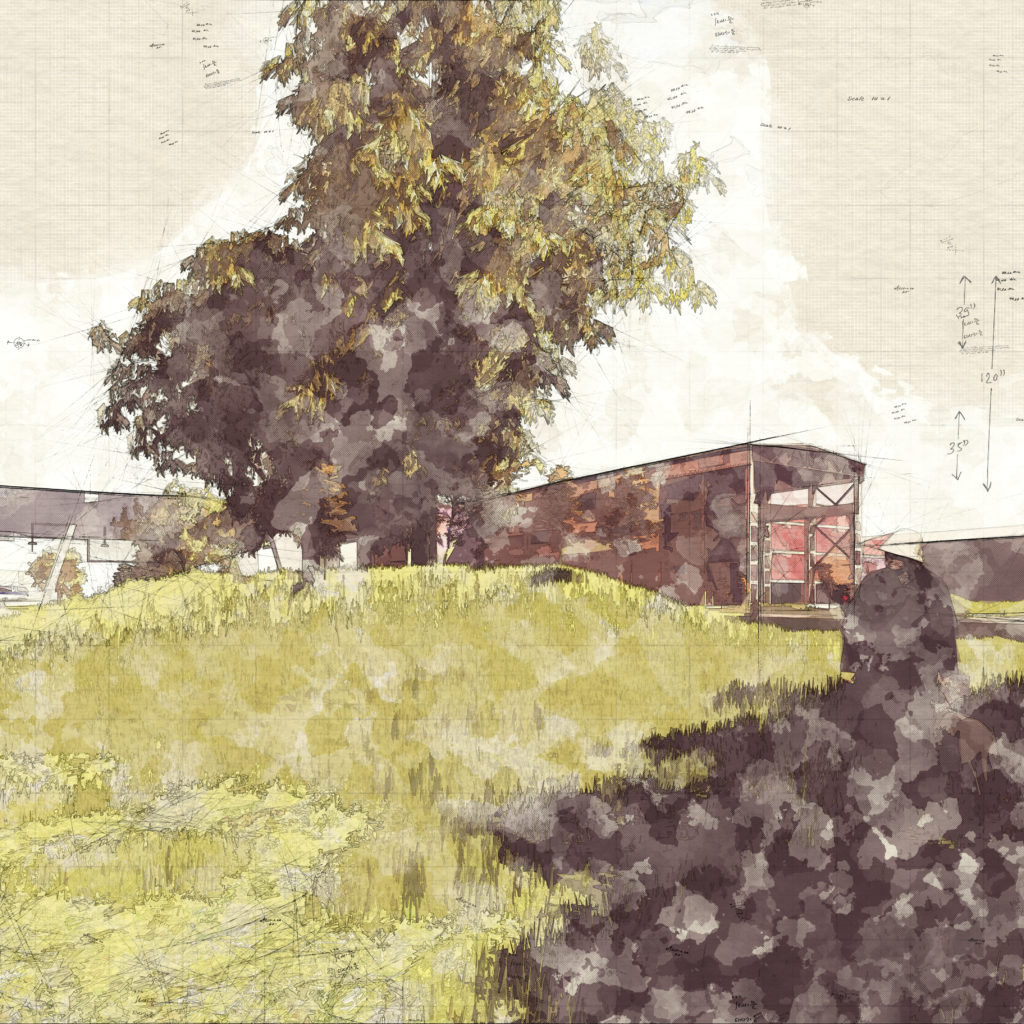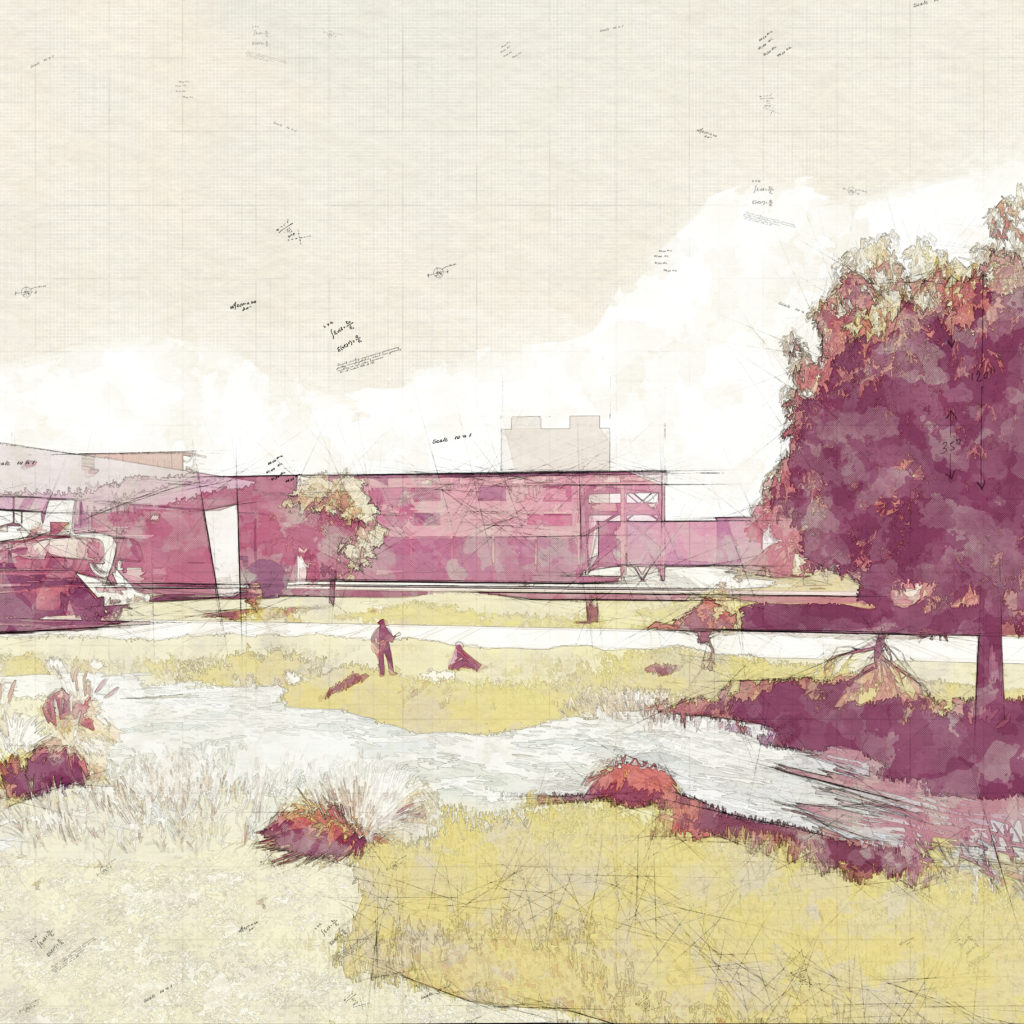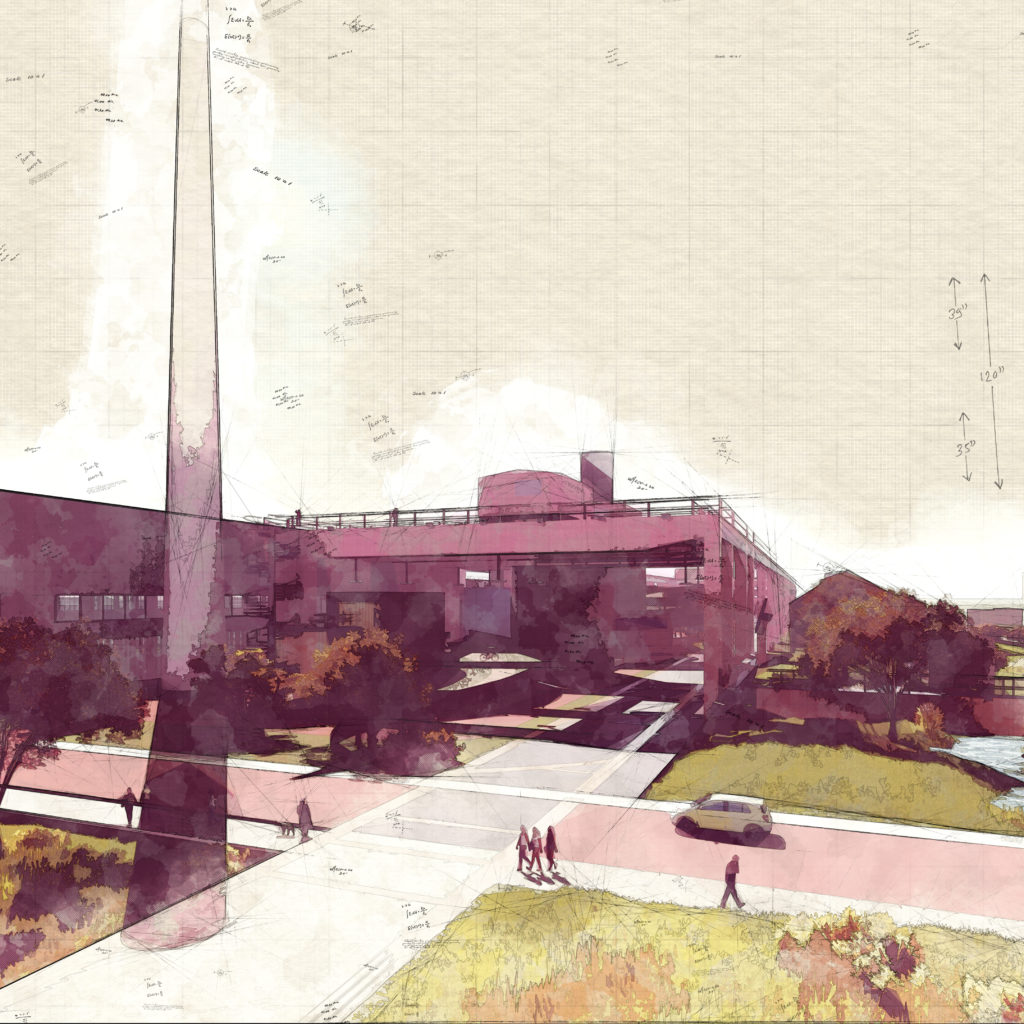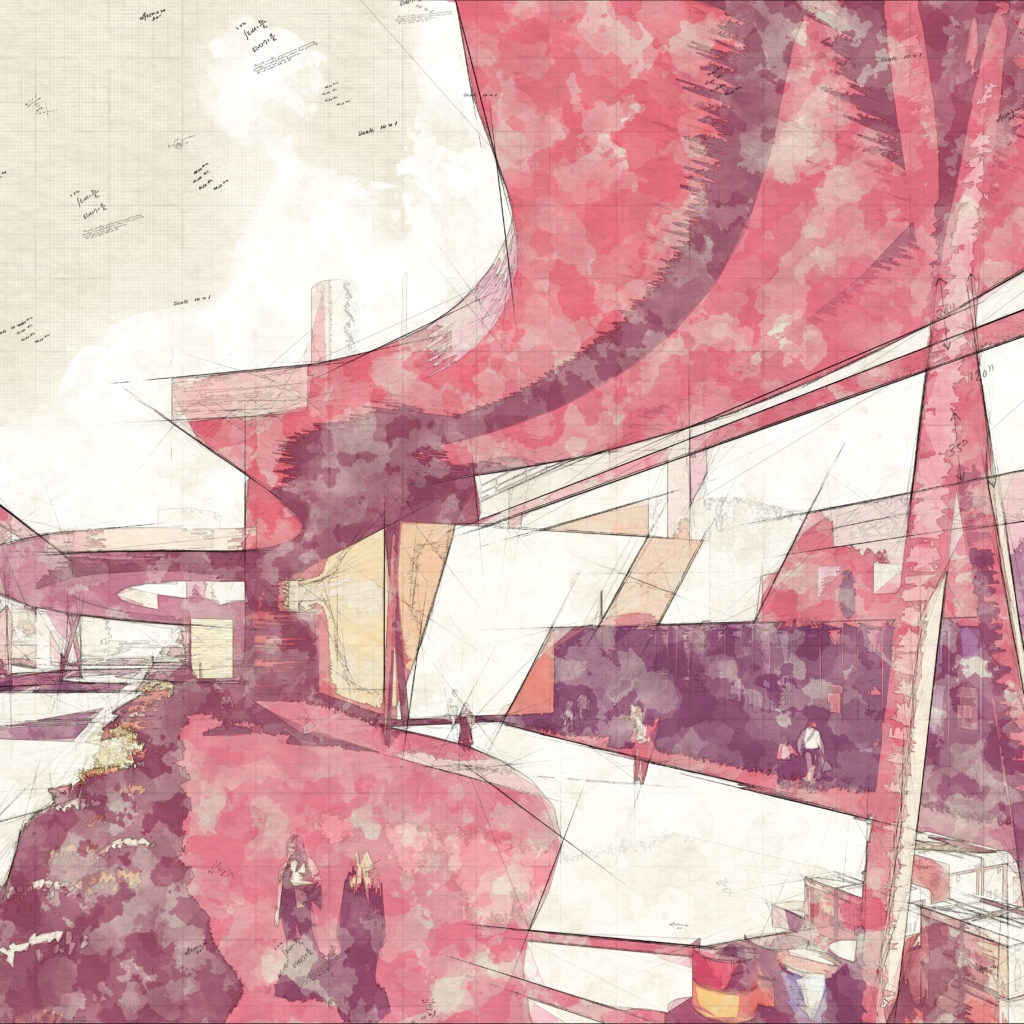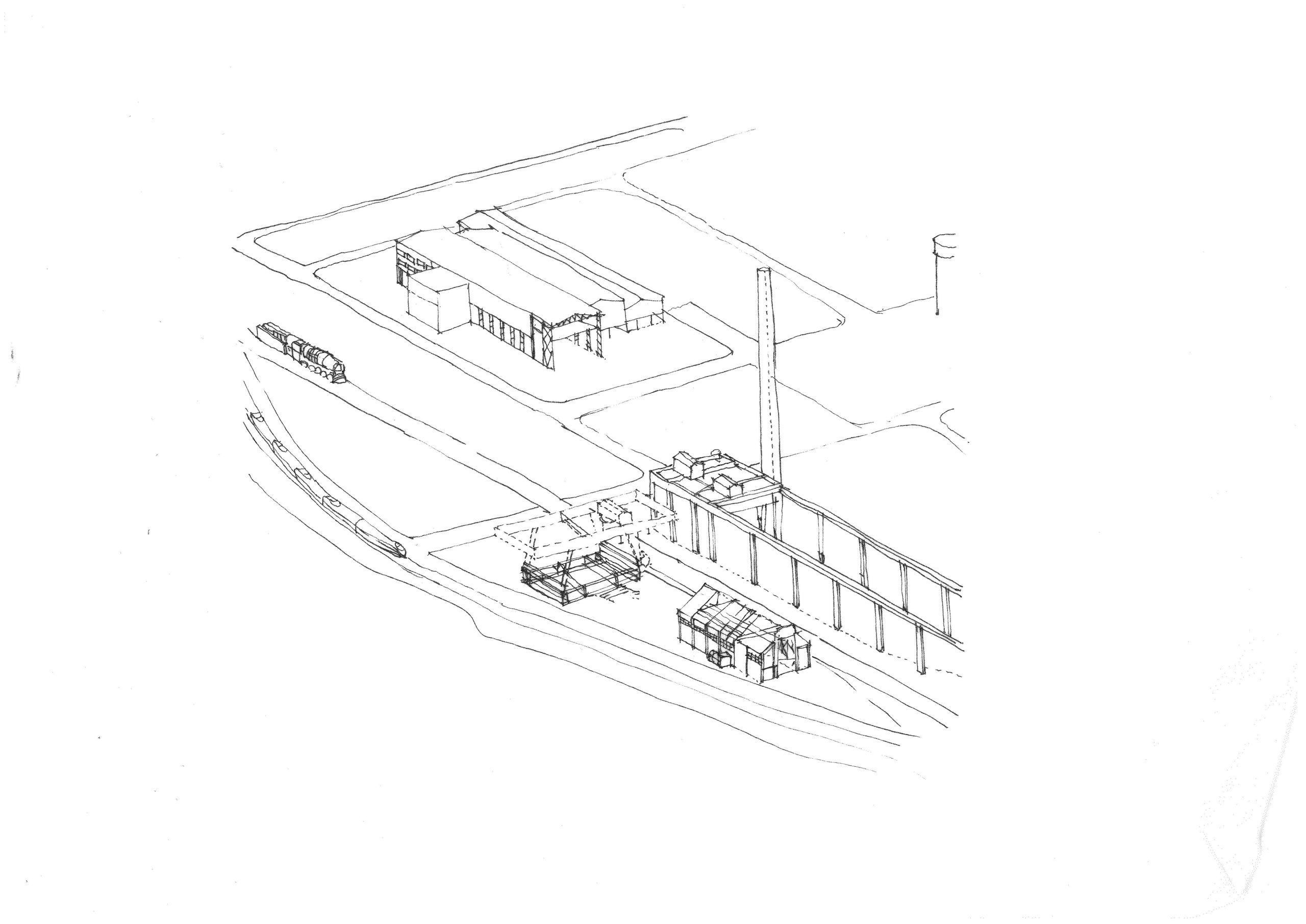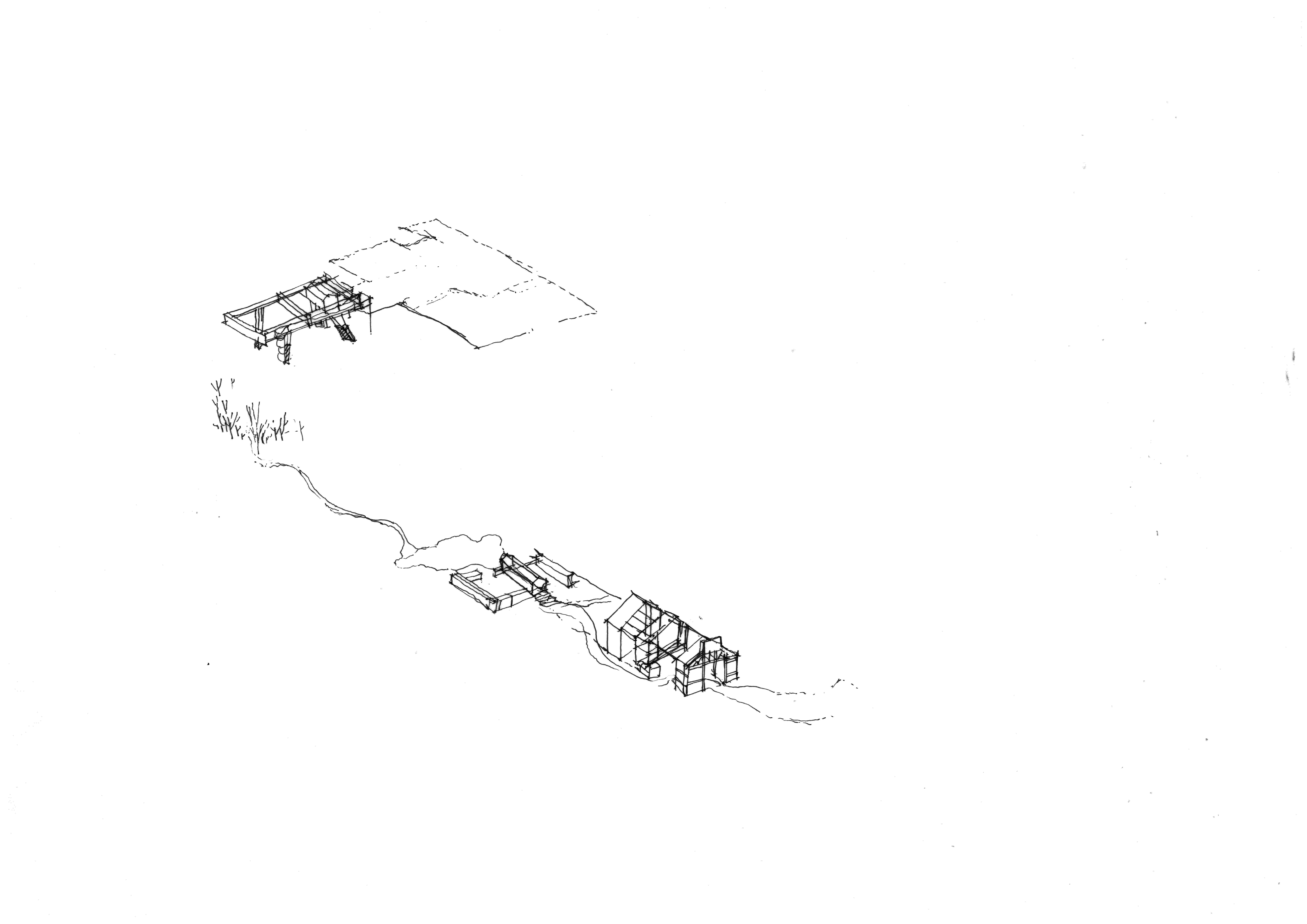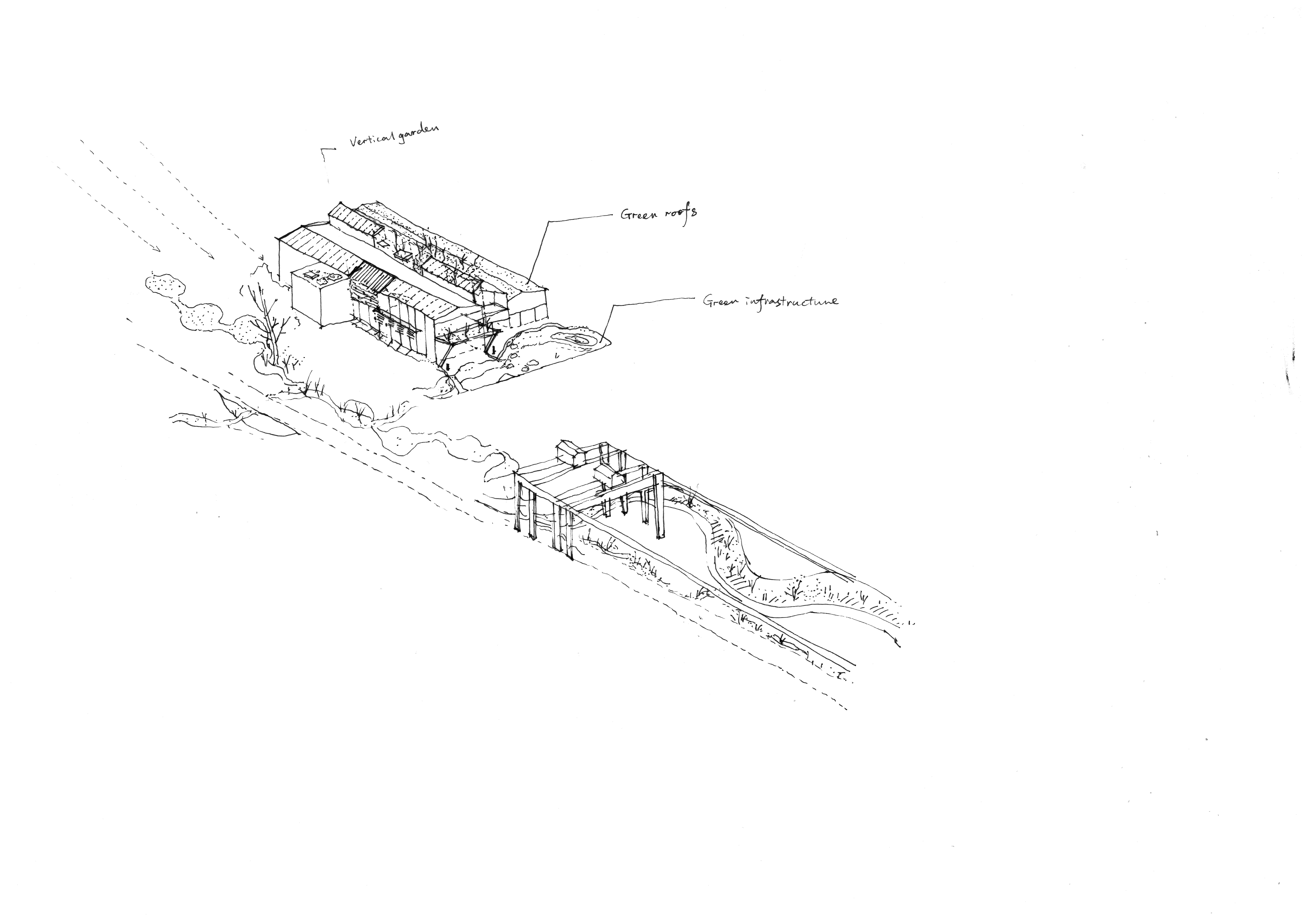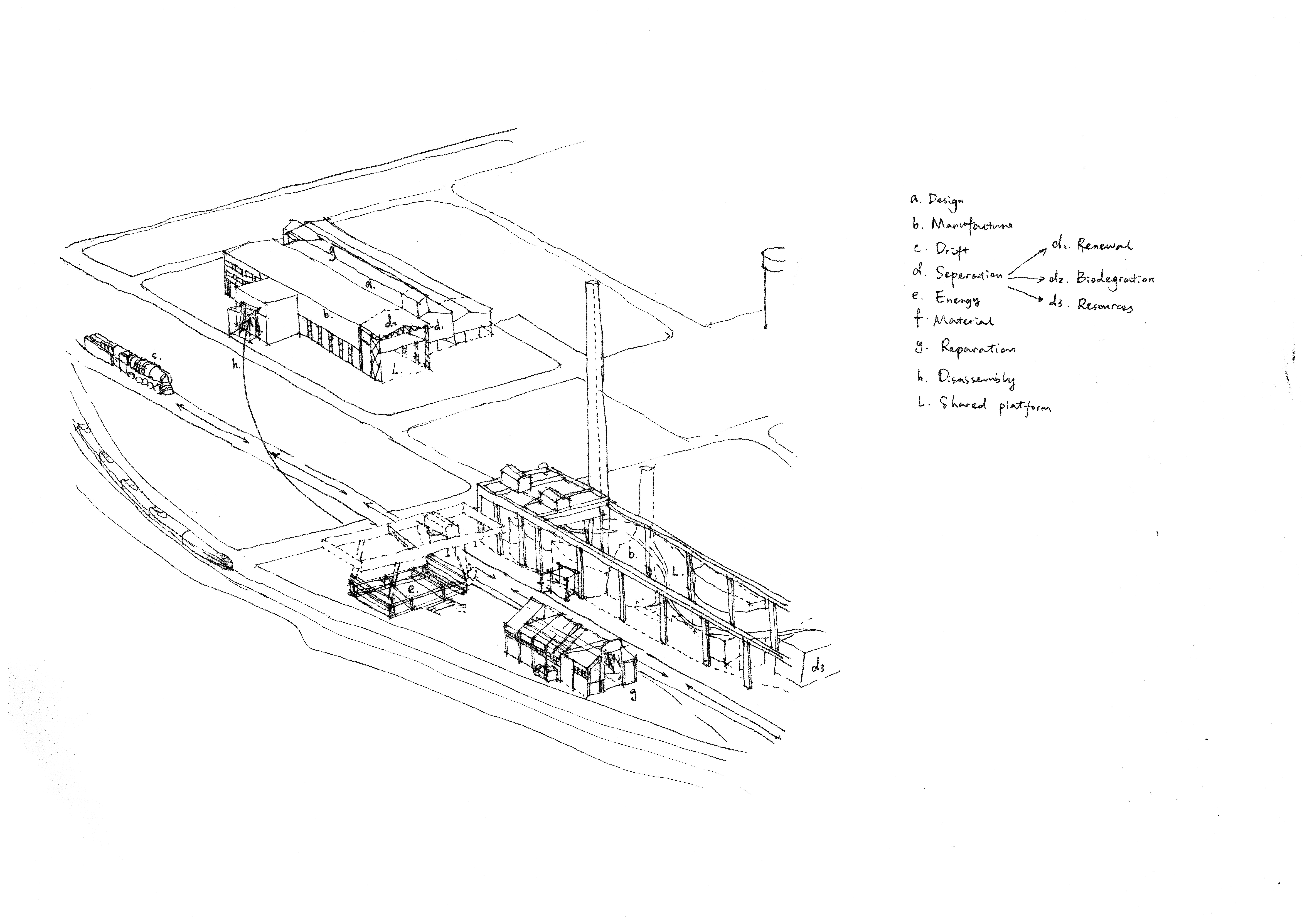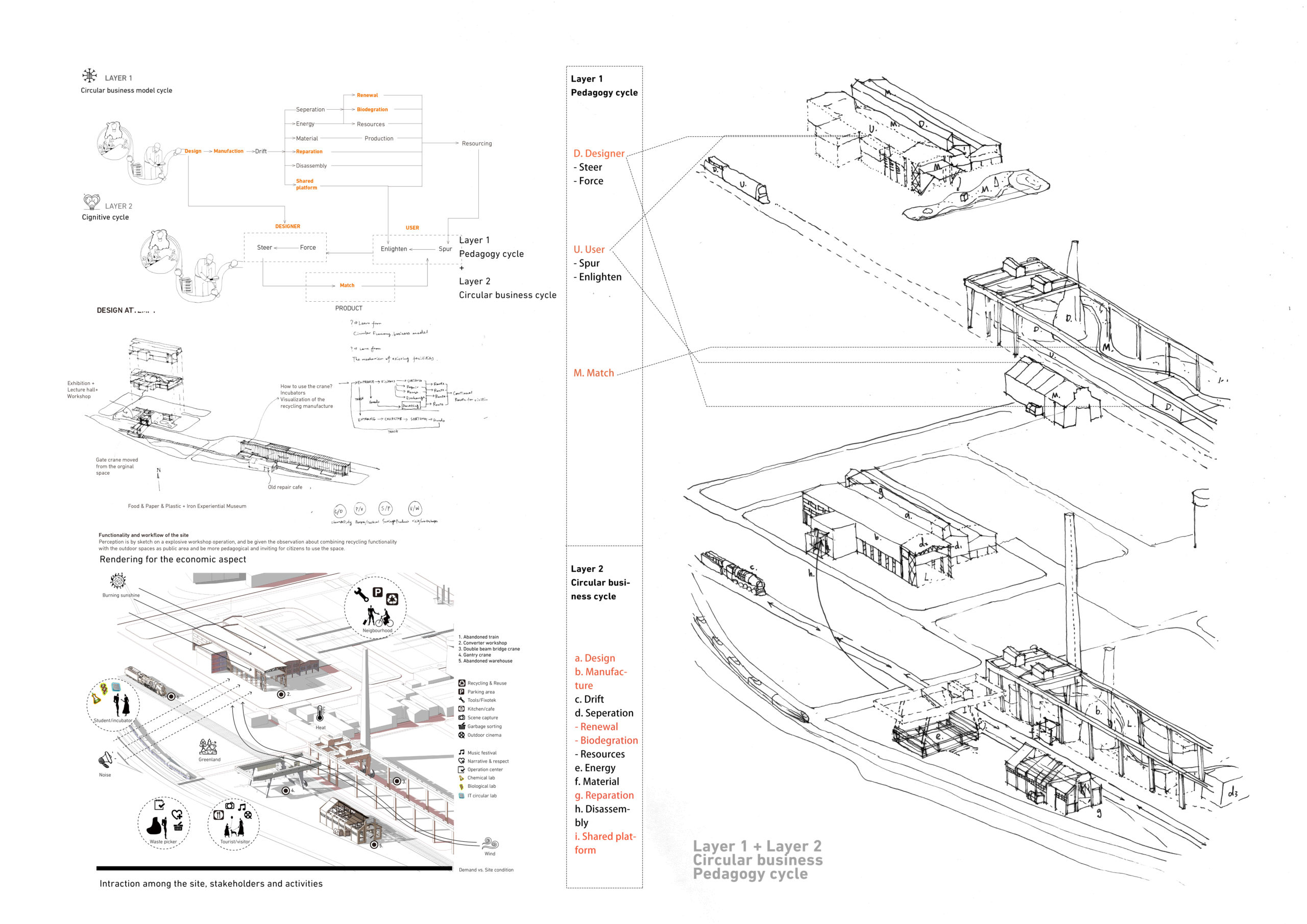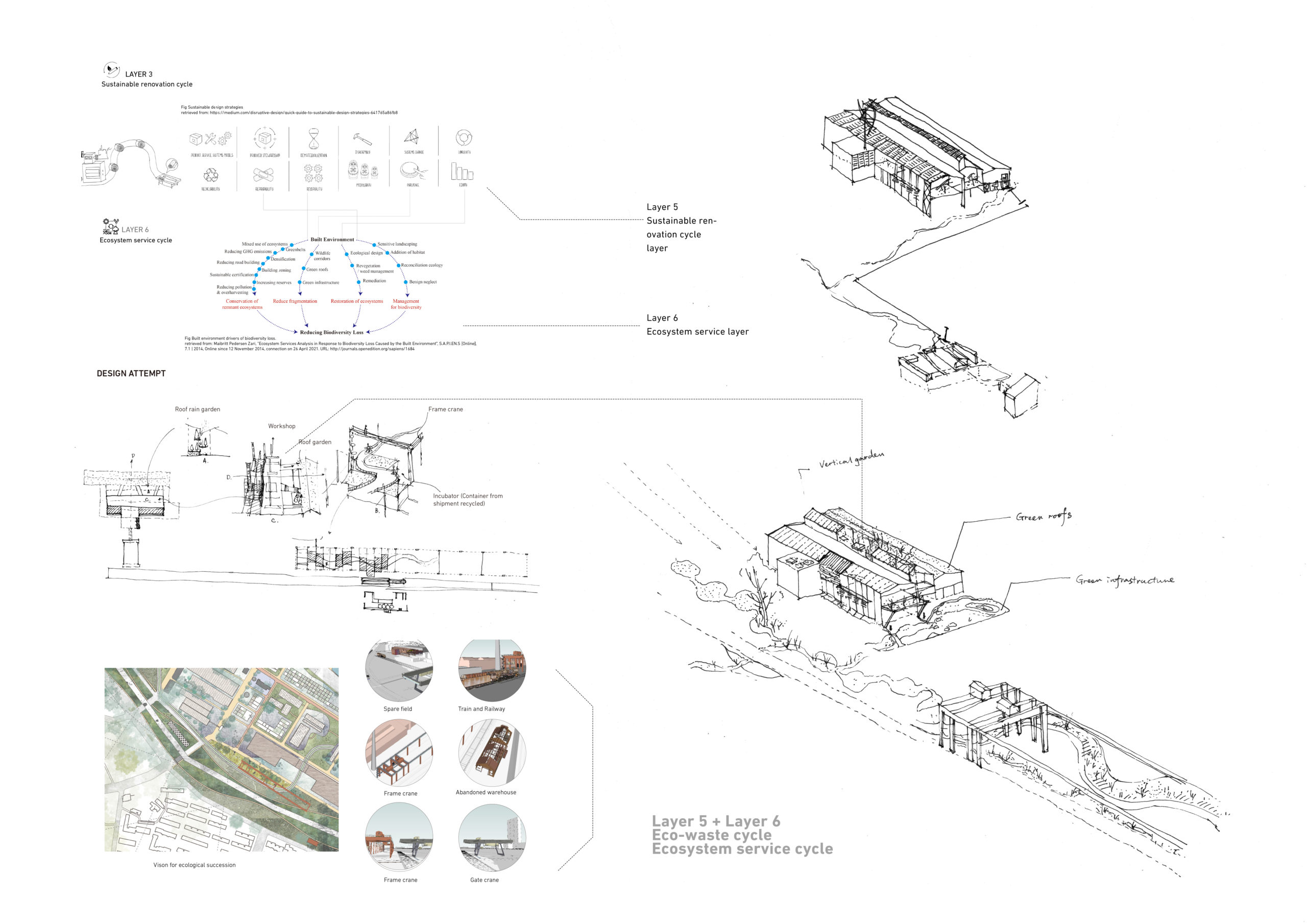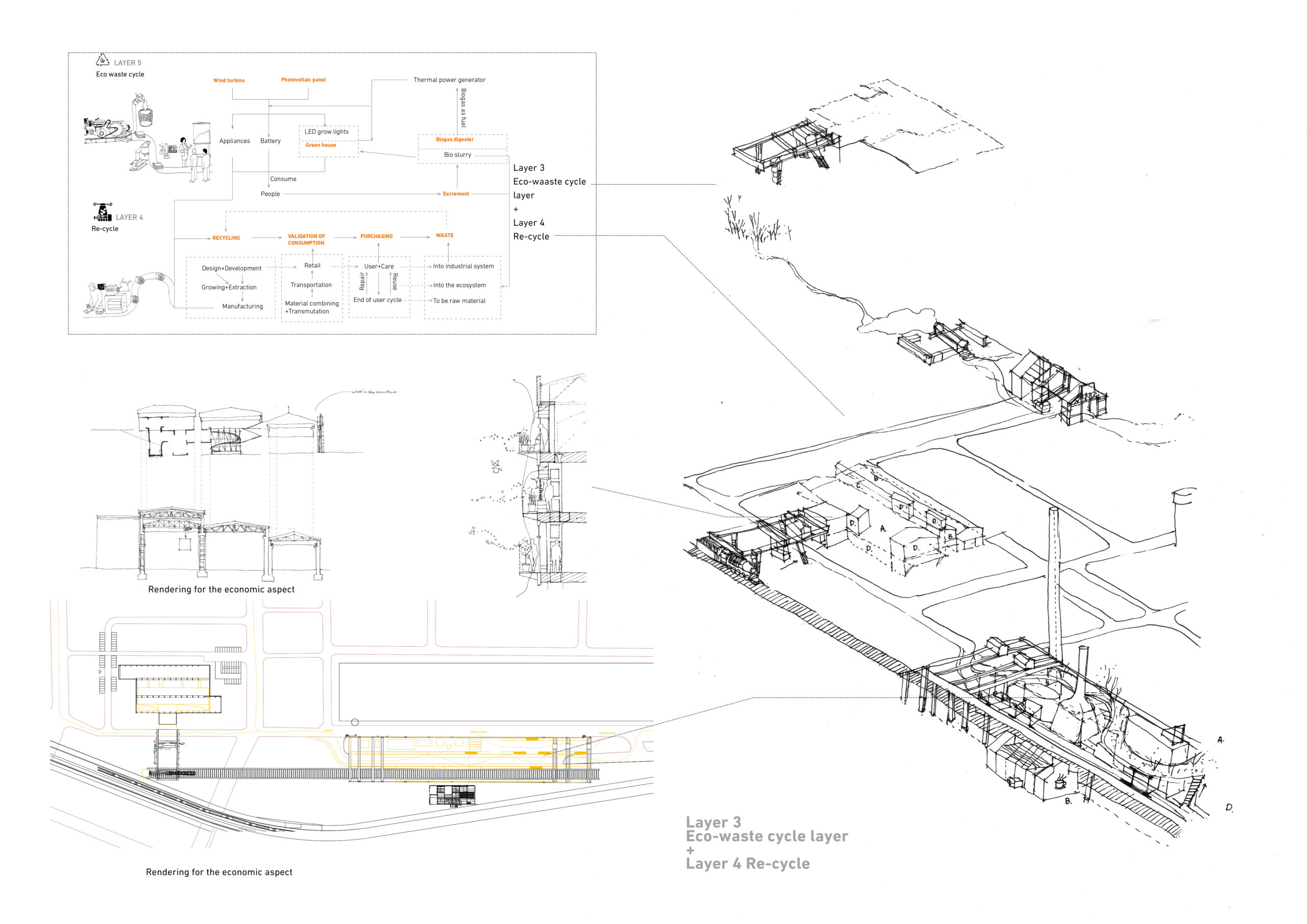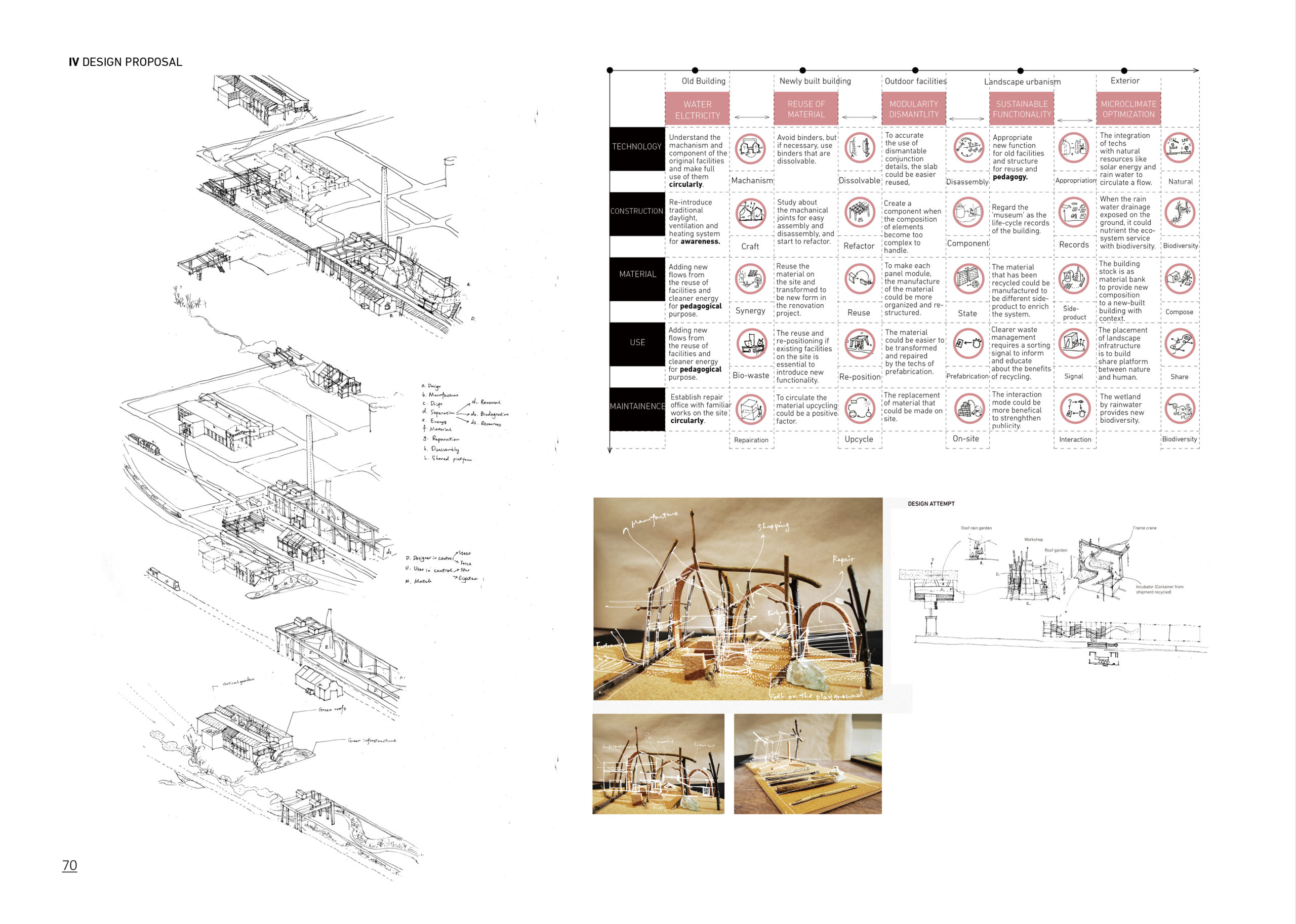RENEWAL MONUMENT
From the circular strategies to heritage renovation
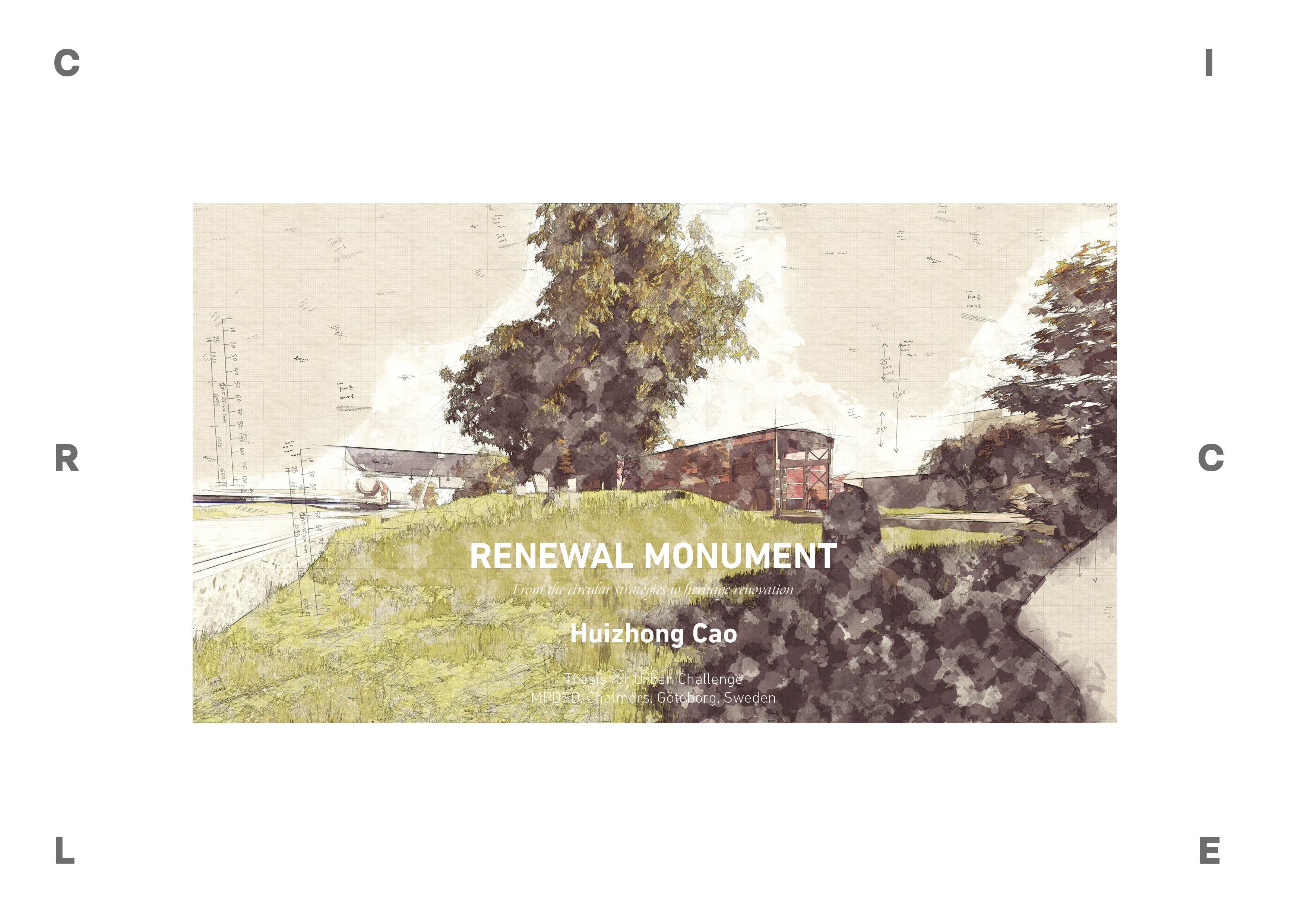
Circular economy
It is inevitable to judge the growth economy from two sides. On the one hand, it boosts economic growth, but on the other hand, the wealth gap, material exhaustion, and waste pollution have been even more severe than the surface prosperity. The linear economy pattern is based on over-consumerism; each year, we leave behind an average of almost 560kg of rubbish per capita. The circular economy is in calling.
New recycling space
New public space is needed to rethink the principle of the built environment, especially that industrial heritage from a new sight, a more circular and sustainable way. The building in the city is no more needed to focus only on increment and entropy increase but in need of transformation and renewal. Besides, to adapt the old building stock into the future circular economy, we must also adapt its original spatial qualities, facilities, structures, and functionalities to a more circular way. Thus, there is a complexity of different layers of circular principles that matter.
Transformation
The design proposal is to transform an abandoned industrial heritage in Wuhan, called Hanyang Iron Works, into a spatial recycling experiential museum, including speculative design and conceptual drawing in the architectural and landscape design. Based on circular economy principles, the design is developed on six layers: circular business cycle, pedagogy cycle, eco-waste cycle, ecosystem service cycle, re-cycle, and material cycle. The six cycles are clarified as chart flow in the thesis and then testified in the design phase. In the end, the design elements like water, eco waste, municipal waste attached to each layer will be evaluated to show its potential for the circular transformation methodology.
The larger find is that when we start to renovate an abandoned building stock in the city, the matter we care about will be the social or cultural aspect and more from a more complex and multi-dimensional consideration for a circular future. To renew a building to fit into a new urban challenge is the substance of urban mining.
Sketch as design tool for manifestation
Poster as the vehicle of design proposal
Displaying and exploring
- Data and report
- The toolbox of six layers
- Local context & experiment
- Poster for the design proposal
- Discussion
